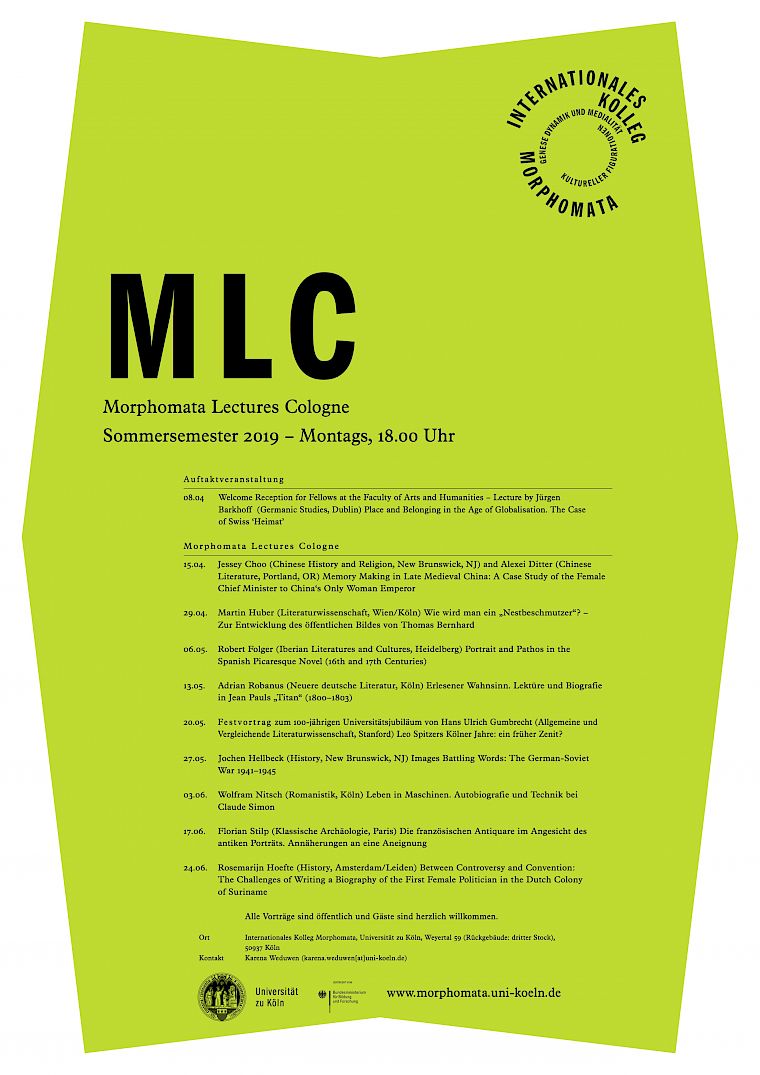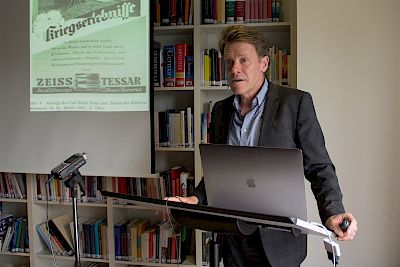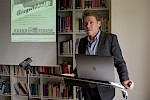Vortragssprache: Englisch
My talk presents the war between Germany and the Soviet Union, 1941-1945, as a battle between images and texts. It contrasts a predominantly visual propagandistic style on the German side with a consistent verbal orientation on the Soviet side and locates these different modes of propaganda in the two regimes’ respective ideologies. Nazi Germany used the visual domain to emphasize Germans’ racial prowess and denounce Soviet citizens (represented as Jewish Commissars, Asian-looking POWs, and female soldiers) as racial degenerates. The war in the East, as a war of annihilation of a radical Other, brought out the degree to which portraiture served as the Nazi regime’s chief biographical medium. By contrast, the Soviet communist system was verbal in character. Relying on a historical sociology with roots in the Enlightenment, it predominantly used textual domains – novels, biographies, and autobiography – to formulate normative notions of the self.
During the war these two mediums clashed, as German soldiers and security officers apprehended their foe through visual lenses, while disregarding Soviet-produced texts as mere “propaganda.” On the other side of the front, Soviet political officers assessed the moral state of the German soldier through captured enemy diaries and letters. The story continued into the camps, where on the German side Soviet POWs were assessed visually (through panoramic shots of “hordes” of POWs, or close-ups of their supposedly denatured physiognomy). In Soviet camps, German soldiers were asked to compose autobiographies and reveal their potential for anti-fascist education. The death rate on both sides was high, yet it was immeasurably higher in the German camps. The visual vs. verbal biographical form that operated in the German and the Soviet settings, respectively, help explain the variance in the death rate. As the Red Army entered Germany in 1944 and 1945, German image production of the “bestial” enemy went into overdrive. On the Soviet side, the concern with textuality, and along with it the veneration of Germany as a birthplace of world literature, constrained the impulse to kill and destroy.
Respondenz: Stephan Packard (Köln)


